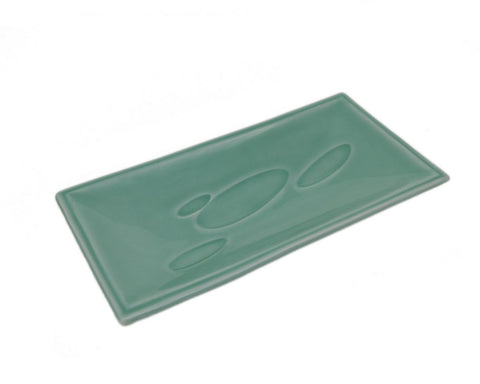
What is Celadon Glaze?
The term "celadon" is often used to describe a light green color, but it also denotes a class of ceramic ware characterized by its translucent glaze and soft hues of green and blue. This celadon the crackle glaze look. There are varying theories for the etymology of the word "celadon" in European languages, but in most of the Far East it is known as 青瓷, which can be translated as "green porcelain."
General Characteristics of Celadon
Technically, what defines a ceramic item as celadon is the glaze used. Traditionally celadon glazes have been applied mostly to porcelain and stoneware. This is still the case today, however, lesser ceramics can also be used. The key to the glaze is its iron content and how this oxidizes in the kiln during firing. In a reduction kiln, oxygen content within the kiln is limited, and as carbon builds up it begins to react with oxygen in the glaze and the clay.
These reactions affect how the iron oxidizes resulting in different colors. In the case of celadon glazes, higher levels of oxygen lead to undesirable olive, brown and black colors, whereas too little oxygen yields colors that are "too blue." For the glaze to come out as desired, the temperature and oxygen levels in the kiln must be carefully controlled.
Celadon History
We want to investigate the various time periods for celadon glaze history. The original techniques for producing celadon were first perfected in Song Dynasty China around 900 years ago. From there, celadon production spread to other countries, most notably Korea and Thailand. While many of the original ancient techniques have been lost to history, beautiful celadon is still produced in China, Korea, and Thailand. The clean, serene appearance of celadon has been appreciated for centuries.
Why isn't Celadon well known in the West Today?
For historical reasons, celadon is not as well known in the West. Celadon was the preferred ceramic ware of Chinese elites during the Song Dynasty and throughout much of the Yuan Dynasty. However, later into the Yuan dynasty, blue and white porcelain, a new class of ceramics, famous for its intricate designs in cobalt blue pigment, began to rise in popularity.
This trend continued as the techniques for making blue and white porcelain improved and tastes continued to change. Even before the end of the Yuan dynasty, blue and white porcelain had supplanted celadon as the preeminent ceramic ware of China. The preeminence of blue and white porcelain continued through the Ming and Qing Dynasties and into the modern era.
By the time European merchants were arriving by sea in large numbers, it was already the Qing Dynasty, therefore much of the porcelain that foreign merchants brought back to the West was blue and white china, rather than celadon.
* * * * * * *
On the next blog post, we will delve deeper into the history of celadon and how it has been appreciated throughout the ages.



Leave a comment